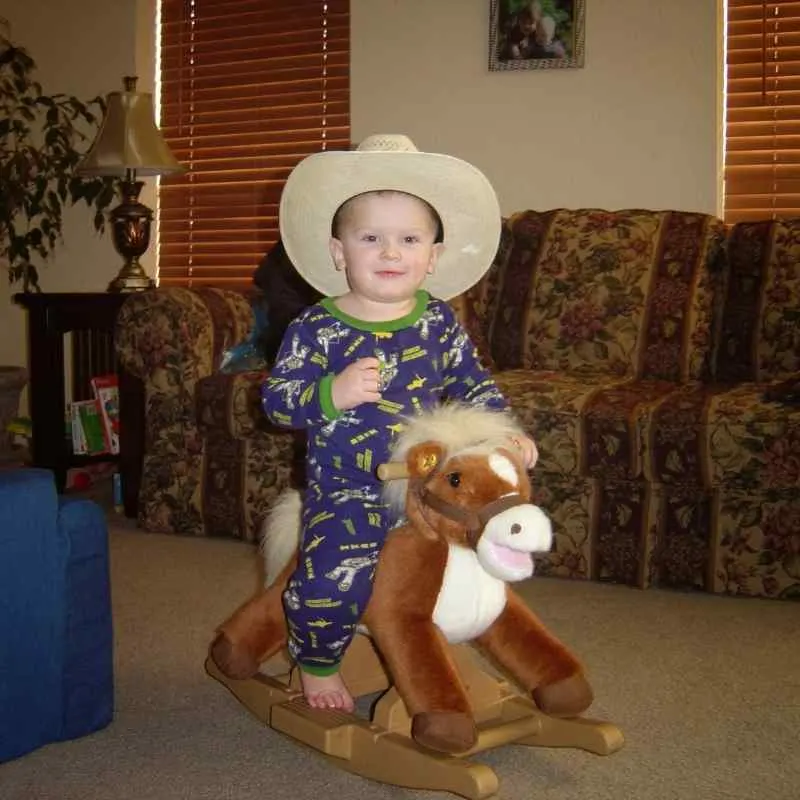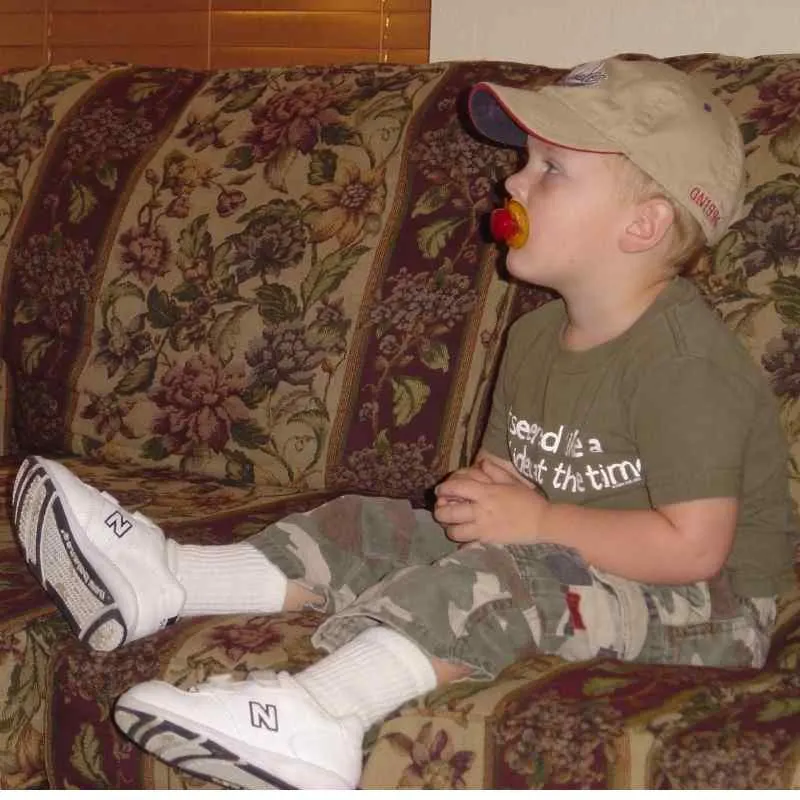- Clay Moon Phase Wall Hanging - July 4, 2023
- What To Do When a Toddler Won’t Keep Their Blanket On - June 10, 2023
- How Do Child Locks Work in Cars? (And When To Use Them!) - June 10, 2023
When your child is learning how to walk, you want to do everything you can to protect them, including their delicate little feet. So, what do the experts say about toddlers wearing shoes while indoors?
Toddlers should not wear shoes while indoors. Being barefoot indoors strengthens their foot muscles, tendons, and ligaments. It also improves coordination, enhances the feet’s tactile receptors, and helps toughen the foot’s skin texture.
Read to discover why toddlers shouldn’t wear shoes while indoors. I’ll also discuss when toddlers should wear shoes.

Reasons Toddlers Shouldn’t Wear Shoes While Indoors
In the previous section, I mentioned why toddlers shouldn’t wear shoes while indoors. I’ll explain these reasons in more depth below:
It Strengthens the Foot Muscles, Tendons, and Ligaments
Toddlers grow rapidly, and when they start walking, their bones start hardening while their muscles, tendons, and ligaments begin developing and strengthening (source).
When toddlers first start learning how to walk, their feet have a flat shape, and their foot muscles are still relatively stiff and underdeveloped.
Walking ensures the foot muscles start working and strengthening. However, if your toddler wears shoes continuously, this can inhibit normal muscle development and prevent them from becoming flexible (source).
Tight or rigid shoes prevent the toddler from using most of the foot muscles.
It Improves Coordination
Toddlers are notorious for stumbling around and falling, while learning how to walk. This is due to their underdeveloped gross motor skills and coordination.
However, their gross motor skills and coordination improve rapidly as they start to walk around the house (source).
Allowing your toddler to walk around barefoot indoors helps accelerate gross motor skill development and coordination because it improves the feet’s ability to sense the floor, allowing the nervous system to determine the body’s position in relation to its surroundings (source).
It Enhances Tactile Receptors in the Feet
When toddlers don’t wear shoes indoors, it enhances the tactile receptors in their feet. Tactile receptors are nerve endings in the skin that send the nervous system information about what the skin is sensing.
The more your toddler walks barefoot, the faster the tactile receptors in the feet develop.
It Helps Toughen the Feet’s Skin Texture
As toddlers become older and start walking more, the skin on their feet gradually becomes harder and sometimes forms calluses. Since toddlers haven’t been walking for very long, the skin on their feet is still soft, tender, and prone to injury.
Allowing your toddler to walk barefoot indoors helps toughen the skin on the feet and makes it less sensitive.
It Helps Improve Posture
If you allow your toddler to go barefoot indoors, it may improve their posture. When toddlers walk barefoot, the nerve endings in the feet help orientate them, reducing the need to look down and decreasing the chances of losing their balance (source).
Toddlers’ shoes that are too rigid with a raised heel area can cause the toddler to veer forward and fall.

When Should Toddlers Wear Shoes?
Now that I’ve explained why toddlers shouldn’t wear shoes indoors, are there instances in which they should wear shoes?
Toddlers should wear shoes to protect their feet when they’re outdoors. They can also wear shoes if it’s cold inside. If your toddler has a foot wound, they should wear shoes to protect the wound.
I’ll discuss these points in more detail below:
When They Are Outdoors
The skin on the toddler’s feet is delicate and too sensitive for some outdoor surfaces, such as hot pavement and grass with stickers.
Although allowing toddlers to walk barefoot as much as possible is an excellent idea, safety should come first. If you don’t know the terrain outside, put shoes on your toddler.
Having your toddler’s feet professionally measured for shoes is an excellent way to ensure that their shoes provide enough support without restricting movement and bone (and muscle) development.
If It’s Cold Inside
Babies begin regulating their body temperature when they are three months old. However, when your child becomes a toddler, they can still be sensitive to the heat and cold.
If your home isn’t heated, and you’re concerned that your toddler’s feet will get too cold inside, you might consider dressing them in non-slip socks or thin-soled slippers. These socks and shoes will keep your toddler’s feet warm and still allow their feet to experience the floor’s texture.
LA ACTIVE Non-Slip Grip Ankle Socks (link to Amazon) have a strong grip pattern on the underside and come in various cheerful colors. They are made with a cotton blend fabric to keep your toddler’s feet warm but not too hot.
If Your Toddler Has a Foot Wound
Your toddler should wear socks, shoes, or both if they have a healing foot wound, no matter how minor.
Walking barefoot exposes your toddler’s feet to viruses, bacteria, and fungi on the floor, which can cause an infection. It can also cause the wound to re-open, slowing the healing process.
Socks or shoes can protect the healing wound.
Conclusion
When kids reach toddler age, they are learning how to walk, and allowing them to go barefoot indoors helps them to:
- Strengthen their foot muscles, tendons, and ligaments.
- Improve their coordination.
- Enhance their tactile receptors.
- Toughen the feet’s skin texture.
- Improve posture.
However, if you’re concerned about your toddler’s feet becoming cold indoors, you should consider dressing them in non-slip socks or thin-soled flexible shoes.
Your toddler should always wear shoes if they have open wounds on their feet to protect them from infections or while outside on surfaces that are hot or could cause them injuries, such as on grass with stickers; always know the terrain when allowing your toddler outside barefooted.
Author Notes:
Teresa is a Registered Nurse in the State of Texas and the mother of two. Opinions and insights on childcare are based on professional knowledge, academic research, and personal experience.
Recommended Reading:
- Can You Put Toddler Shoes in the Washer? A Simple Answer
- Are Toddler and Infant Shoes the Same Size?
Make Your Own Beautiful Living Succulent Wreath Centerpiece! Complete video course by Jeannine Romero now available through Skillshare.
